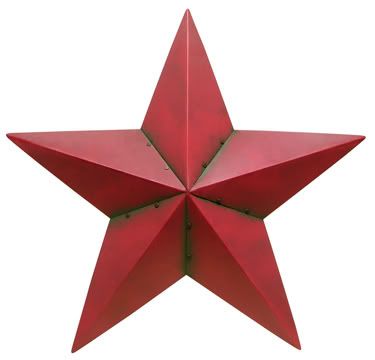Monday, October 7, 2013
Guido von List: Part 25 - The Mystery of the Vehme: Entry A
The five-angled star, the Vehme-Star, the Truthenfuss* (truh = turn, fuss = foot) is the hieroglyph of "revolving or turning generation," of "rebirth"--one of the most important articles of faith in the Aryan religion. In its exoteric interpretation this sign simply says: "return," and was therefore a favorite sign used at hostels and inns, in order to convey the meaning: "whoever is a guest here should come again."
*List: Truthenfuss, standard modern German: Drudenfuss, the foot of a Drude; pentagram. Drude: "a dangerous female numen of the night," cf. Old Norse Thrudhr, old English dhrydh: "a wood maiden." Cf. further Jacob Grimm, Teutonic Mythology. vol. 1, pp. 422-23.
[excerpt from pages 86 and 87 from 'Secret of the Runes']
I recall when I first read this, in particular the words "a favorite sign used at hostels and inns," I didn't have any historical point of reference. It may have been because I was thinking "pentagram symbol," rather than "five-pointed star." A few days ago I saw a home with a black star on its porch on a television program, and it finally hit me. He meant "star," not "symbol!" I have seen those stars on homes, usually black and contoured as the symbol below is, but I didn't make the connection.
One person on a Christian forum answered this question this way: Google "Amish Barn Star" It is a symbol of good luck. Nothing sinister, just a decorating fad. There's also the apparent truth of the pentagram having once been a symbol of Christianity.
From Yahoo Answers:
It's supposed to keep evil away or a an old amish good luck charm are the reasons I have been told the most.
I've also read that it has military meaning:
Blue 5-angel star= Family member currently serving in a War
Gold 5-angel star= Lost a Family member in a War
Brown 5-angel star= Veteran of the military
Red 5-angel star= Family member wounded in combat
Some people do just use it for decoration.
Excerpt from another Christian forum:
Five-pointed stars on houses?
Does anyone know the meaning of (presumably plastic) 5-pointed stars mounted on the fronts of houses, usually next to the doors? They appear to be plastic and I've seen them in various colors. White is common. There is only one per house. They have a radius of about one foot. I saw a lot of them when we traveled through KY, TN, NC and into Georgia about 2 weeks ago. There are a few of them here in the Chicago suburban area. I'm aware that the five-pointed star is a symbol of witchcraft and wonder if the inhabitants of these houses are proclaiming that.
While I don't know what those stars mean today, when I was a child living in Illinois, a star in someone's window meant that it was a "safehouse". They were homes along the routes students walked on the way to school, and if there was a problem going back and forth to school, a child could run to that house for safety. I would be very surprised if in our day and age, the star meant it was a safehouse.
There are probably a number of meanings that developed separately over time, but the most solid origin for at least the American star tradition--which ties directly to the German-speaking countries--is the "Amish barn star." Not surprisingly, these stars are particularly popular in western Pennsylvania, which ties directly to the German/Dutch "hex signs" which we have covered here on the Hexology series. Yes, this is the link to List's vehme tradition in today's world. Also, they are easy to purchase online with a simple "barn star" or "Amish barn star" search. This "American tradition" isn't as popular here in California, which is why I failed to make the connection sooner. They come in many colors, including this nice eggshell-colored one.
Within Amish culture, which no longer even exists in Switzerland, we see some of the old German country traditions. I'm slightly embarrassed that a lot of connections here have escaped me, even though I have been close to them here and there in my life. California descendants of the "dust bowl" era, which are in the millions--and who can trace their roots back to Oklahoma and Texas--brought many folk traditions and cultural expressions with them which exist to this day. I can recall seeing some of this symbolism in country-style stores over the years... including the barn star. This star is of ancient Heathen origin; although the related pentagram has some Christian roots.
.
Subscribe to:
Post Comments (Atom)



No comments:
Post a Comment